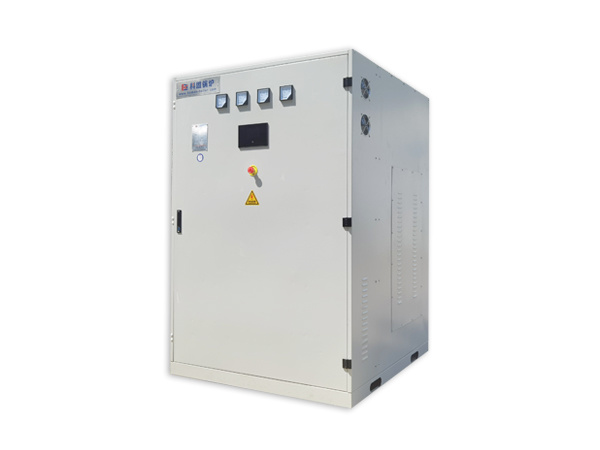What is the flue gas purification and reprocessing of steam generators like?
Release time:
2022-01-22
A steam generator, also known as a steam heat source (generally called a boiler), is a mechanical device that uses the heat of fuel or other energy to heat water into hot water or steam. The original meaning of 'pot' refers to a water container heated by fire, and 'furnace' refers to the place where fuel is burned. A boiler largely comprises both a pot and a furnace.
Steam GeneratorAlso known as a steam heat generator (generally called a boiler), a steam generator is a mechanical device that uses the heat of fuel or other energy to heat water into hot water or steam. The original meaning of "pot" refers to a water container heated by fire, and "furnace" refers to the place where fuel is burned. A boiler includes most of the pot and furnace.

For water-steam systems, water is heated to a certain temperature in the heater and then enters the economizer through the water supply pipe for further heating before being fed into the drum. After mixing with the water in the drum, it flows along the downcomer into the water wall inlet header. The water absorbs radiant heat from the furnace inside the water wall tubes, forming a mixture of carbonic acid beverage. This mixture then flows through the riser to the drum, where a carbonic acid beverage separator separates the water and steam. The separated saturated steam flows from the top of the drum to the superheater, continuously absorbing heat to become 450 superheated steam, which is then sent to the steam turbine. For the combustion and flue gas system, the blower sends air into the air preheater to be heated to a certain temperature. Coal powder is ground to a certain particle size in a pulverizer, and a portion of the hot air from the air preheater is used to spray the furnace through the burner. The coal powder and air mixture sprayed from the burner mixes with the remaining hot air in the furnace, releasing a large amount of heat. After combustion, the hot flue gas sequentially passes through the furnace, slagging bundle, superheater, economizer, and air preheater. After passing through the dust removal device, the fly ash is removed, and the flue gas is then discharged to the atmosphere from the induced draft fan through the chimney.
Steam GeneratorHow is flue gas purification and reprocessing carried out?
Steam generator manufacturers believe that the dust (including alkaline powder and carbon black), sulfur, and nitrogen oxides in boiler flue gas are all substances that pollute the atmosphere. Without purification, the emission standards may reach several times to tens of times the environmental protection standards. Measures to control the emission of these substances include pre-combustion treatment, improved combustion technology, dust removal, desulfurization, and denitrification. A tall chimney can only reduce the concentration of pollutants in the atmosphere near the chimney.
The forces used for flue gas dust removal include gravity, centrifugal force, inertia force, adhesion force, sound waves, and static electricity. Coarse particles generally use gravity settling and inertial separation; at high capacities, centrifugal force is often used to separate dust. Electrostatic precipitators and bag dust collectors have high dust removal efficiency. In wet and Venturi-water film dust collectors, the water droplet film can adhere to the alkaline solution, resulting in high dust removal efficiency, and also absorbing gaseous pollutants.
Steam generator manufacturers believe that flue gas desulfurization methods include absorption methods and catalytic oxidation methods. Dry absorption uses alkaline alumina, semi-coke, activated carbon, etc.; wet absorption uses ammonia, sodium carbonate, lime slurry, etc. Catalysts such as vanadium pentoxide oxidize most sulfur dioxide into sulfur trioxide at a certain temperature, which helps in absorption desulfurization. Due to the high cost of flue gas desulfurization equipment and operation, most companies prefer to use low-sulfur fuel to reduce the emission of sulfur oxides.
The main nitrogen oxides in flue gas are nitrogen monoxide. Flue gas denitrification methods include catalytic decomposition, selective catalytic reduction, and high-temperature activated carbon absorption denitrification.
Steam generator manufacturers believe that coal-fired boilers need to discharge a large amount of slag and alkaline powder collected by dust collectors during operation. These are generally transferred to landfills using hydraulic or mechanical methods. Since the 1950s, people have been striving for the comprehensive utilization of ash. For example, ash is used to make cement, bricks, and concrete aggregates and other building materials. Starting in the 1970s, hollow beads were extracted from fly ash and used as refractory insulation materials.
This is theSteam Generatorintroduction. Hope this helps you.
Latest News




